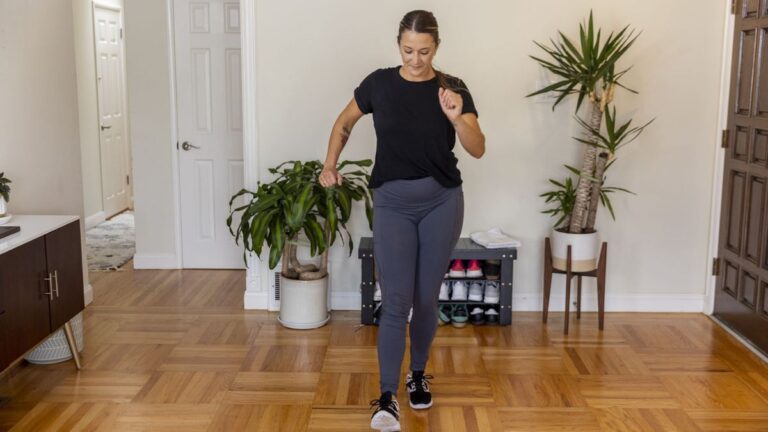Essential Exercise for Longevity: Boost Aging Prevention by Age 40
Essential Exercises for Longevity: Maximize Your Health by Age 40
Aging is a natural part of life, but did you know that how we age largely depends on our lifestyle choices? It’s like the old saying goes: “You’re as young as you feel.” But let me tell you, feeling young isn’t just about your mental attitude—it’s also about how you move your body! In this article, we’ll explore the critical exercises to adopt by the time you hit 40, helping you not only slow down the aging process but also boost your overall quality of life.
Why Exercise Matters for Longevity
First off, let’s break down why exercise is the golden key to unlocking a longer, healthier life. It’s not just about fitting into that pair of jeans or impressing folks at the beach. Here’s the deal:
- Improved Cardiovascular Health: Regular exercise strengthens your heart and improves circulation, which is crucial for longevity. Think of your heart as your body’s engine—it needs maintenance to run smoothly.
- Better Mental Health: Physical activity helps release endorphins, which fight off feelings of anxiety and depression. It’s like a natural mood booster.
- Bone and Muscle Health: By engaging in strength training, you’re building muscles and fortifying your bones against age-related conditions. Why? Because muscles literally help hold you together!
- Weight Management: Exercise helps keep those extra pounds at bay, which can significantly reduce the risk of diseases like diabetes and hypertension.
Exercise Types to Prioritize by Age 40
So, what kind of exercises are we talking about? Let’s dive into the nitty-gritty of the essential types of workouts you should incorporate into your routine before you reach your fabulous 40s.
1. Strength Training
You might be thinking, “Isn’t strength training just for bodybuilders?” Not quite! Here’s why it’s essential:
- Boosts Metabolism: Muscle burns more calories at rest than fat. Essentially, by building muscle, you’re giving your metabolism a permanent boost.
- Prevents Age-Related Muscle Loss: As we age, we naturally lose muscle mass. Strength training can counteract this, keeping you fit and firm well into your later years.
Fun Ways to Incorporate Strength Training
- Resistance bands: Super portable and effective!
- Bodyweight exercises: Push-ups, squats, and lunges can be done at home.
- Weight lifting: Join a local gym or invest in simple dumbbells for home workouts.
2. Cardiovascular Exercise
When it comes to heart health, cardio is King! Whether it’s cycling, swimming, jogging, or dancing, getting that heart rate up can be a game changer.
Benefits of Cardio
- Increases lung capacity: Better oxygen flow means more energy.
- Regulates blood pressure: It’s like giving your blood pressure a spa day.
- Enhances mood: Ever felt on cloud nine after a run? That’s all those endorphins working their magic.
3. Flexibility and Balance Exercises
Ever heard the phrase, “Use it or lose it”? This couldn’t be truer when it comes to flexibility.
Key Benefits
- Prevents injuries: Flexibility work prepares your body for daily movements and reduces the risk of strains or sprains, making you feel like a superhero.
- Improves posture: Who wouldn’t want to stand taller and more confidently?
Flexibility and Balance Activities
- Yoga: Get your zen while stretching out those muscles.
- Pilates: Focuses not only on flexibility but also core strength.
- Tai Chi: Great for balance and calming the mind.
4. HIIT (High-Intensity Interval Training)
Alright, hold onto your hats because we’re turning up the heat! HIIT is like your quick, energetic shot of espresso in the workout world.
Benefits
- Time-efficient: Get a high-impact workout in less time.
- Continues to burn calories post-workout: You’ll be burning calories even after hitting that couch!
Creating a Balanced Weekly Routine
Now that we’ve got the “what” figured out, let’s talk about the “how!” The key to a thriving exercise life is balance.
- Strength Training: 2-3 times a week (50-60 mins)
- Cardio: 3-5 times a week (30 mins)
- Flexibility/Balance: 2-3 times a week (20-30 mins)
- HIIT: 1-2 times a week (20-30 mins)
Example Weekly Schedule
- Monday: Strength training
- Tuesday: Cardio (running or cycling)
- Wednesday: HIIT
- Thursday: Flexibility (yoga)
- Friday: Strength training
- Saturday: Cardio (dance or swim)
- Sunday: Rest or light stretching
Avoiding Common Pitfalls
Let’s keep it real—starting an exercise routine can feel daunting! Here are a few pitfalls to steer clear of:
- Jumping In Too Fast: Start slow and gradually increase intensity to avoid injury. Think of your body like a car; you wouldn’t floor it right out of the garage, right?
- Inconsistency: Establish a routine that works for you. Consistency over intensity wins the race.
- Neglecting Recovery: Your body needs time to heal post-exercise. Don’t forget to give it the TLC it deserves.
The Importance of Nutrition in the Mix
Exercise and nutrition are the ultimate power couple. You can’t outwork a bad diet! Here are some quick tips to focus on:
- Hydrate: Drink water like it’s your full-time job.
- Protein-packed meals: Lean meats, beans, and nuts are your friends here.
- Whole foods: Fill your plate with veggies, fruits, and whole grains to ensure you get all those vitamins and minerals your body craves.
Conclusion
There you have it! Exercises to embrace by the time you hit the big 4-0 to keep you feeling youthful and vibrant. Choosing to move your body in varied, enjoyable ways will not only help you funnel energy into every day but also foster a more positive mindset towards aging. It’s all about longevity and making choices today for a healthier tomorrow. So why wait? Get out there and crush those fitness goals!
FAQs
1. How often should I exercise for longevity?
Aim for at least 150 minutes of moderate activity per week, combining strength training, cardio, and flexibility exercises.
2. Can I start a fitness routine at 40?
Absolutely! It’s never too late to start. Just be sure to consult with a healthcare provider before beginning a new exercise regimen.
3. What are good exercises for beginners?
Walking, bodyweight exercises, swimming, and yoga are all great starting points.
4. How important is rest in a workout routine?
Rest is crucial! It allows your muscles to repair and grow, which is essential for overall fitness.
5. Is it necessary to lift weights to stay fit?
While weightlifting is beneficial, other forms of strength training like resistance bands and bodyweight exercises can also be very effective.







